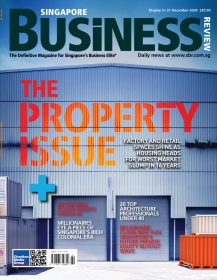
Singapore braces for a gloomy H2 after dismal first-half growth
Growth will hover at the lower end of forecasts.
Singapore is in for a gloomy second half after delivering dismal growth numbers for the first six months of the year.
Analysts noted that the city-state’s uninspiring H1 figures point to more pain in coming months, particularly for the struggling manufacturing sector.
“We expect the manufacturing sector to remain weak in H2. External demand remains poor. Only exports to the US were up, while exports to other major destinations, such as China, have contracted so far this year. Other indicators, such as the North American Semiconductor book-to-bill ratio and Taiwan’s export performance, also point to weak electronics demand,” said Standard Chartered Economist Edward Lee in a report.
External economic pains will be further intensified by tightening labour market conditions on back of ongoing domestic restructuring.
“Restructuring and stricter foreign worker policies are also imposing supply side constraints to growth. Healthier segments may not be able to capitalize on the demand upswing because of these restraints. Foreign labor quotas or dependency ratio ceilings came into full effect on 1 July, and could further tighten labor market conditions in the second half,” noted Hak Bin Chua, ASEAN Economist at Bank of America Merrill Lynch.
Singapore’s full-year growth is expected to hover at the lower end of the government’s revised forecast range, but a monetary policy easing is unlikely unless the country slips into technical recession.
“We maintain our GDP growth forecast of 2% for 2015, at the lower end of MTI’s revised forecast range, and 2.2% for 2016. We think the MAS will consider easing only in the case of a technical recession. We cannot rule out the possibility of a technical recession, given the ongoing restructuring and challenging external outlook,” Chua said.
“We currently expect the Monetary Authority of Singapore (MAS) to maintain its current monetary policy settings in mid-October. 2015 growth is likely to be towards the lower end of the government’s initial forecast, but this may not be sufficient to warrant further loosening,” Lee noted.
























 Advertise
Advertise






